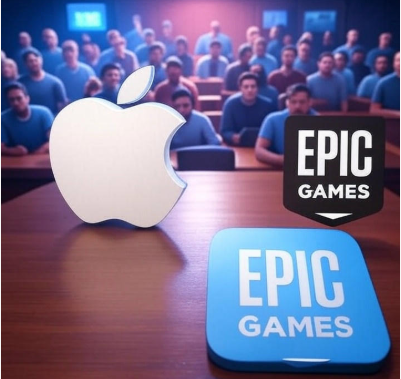When Masahiro Sakurai announced he was returning to the Kirby franchise after more than two decades away, fans collectively lost their minds. But buried beneath all the hype around playable characters, improved mechanics, and nostalgic callbacks to the 2003 GameCube classic, there’s another story that deserves attention. Kirby Air Riders isn’t just bringing back beloved gameplay – it’s quietly making history as the first game ever built on Bandai Namco’s brand new SOL-AVES engine.
Yeah, I had the same reaction. SOL-what now?
The Engine That Nobody Saw Coming
Here’s the thing about the SOL-AVES engine: Bandai Namco has been incredibly tight-lipped about it. And I mean incredibly tight-lipped. While other publishers love to tout their shiny new tech with flashy presentations and developer diaries, Bandai Namco has been working on this thing in the shadows for years.
The first real confirmation that Kirby Air Riders uses SOL-AVES came from eagle-eyed players who downloaded the “Global Test Ride” demo currently available on Switch 2. These dedicated fans did what any self-respecting game enthusiast would do – they dug through the files looking for Easter eggs and technical details. What they found instead was a credit line mentioning the SOL-AVES engine, along with trademark notices and references on Bandai Namco’s website.
Talk about a low-key announcement for what could be a game-changer.
Why This Matters More Than You Think
Let me back up a second and explain why this is actually a big deal. In today’s gaming landscape, most companies – even massive ones like Bandai Namco – rely on third-party engines. You’ve probably heard of Unity and Unreal Engine, right? These are the workhorses of game development. They’re powerful, well-supported, and most importantly, they’re already finished. Companies can license them and get straight to making games instead of spending years building technology from scratch.
Bandai Namco itself has used these engines extensively. Super Smash Bros. Ultimate? That ran on Havok. Tales of Arise and Dragon Ball Z: Kakarot both used Unreal Engine 4. It made perfect sense from a business perspective.
So why would a company suddenly decide to invest millions of dollars and years of development time into creating their own engine when perfectly good alternatives already exist?
The Long Road to SOL-AVES
The story actually starts way back in 2018. That’s when Bandai Namco first started kicking around the idea of building their own in-house game engine. According to Katsusuke Horiuchi, Bandai Namco’s Engine Unit Director, the motivation was simple but powerful: they wanted “to continue to have the technological capabilities to create a solid foundation by ourselves, rather than leaving the base to game engines made by other companies.”
Translation? They wanted control.
Think about it from their perspective. When you license an engine like Unity or Unreal, you’re at the mercy of another company’s development priorities and update schedule. You’re paying licensing fees that can get expensive when you’re a publisher pumping out dozens of games. And if that engine doesn’t quite do what you need it to do, tough luck – you’re stuck working around its limitations.
By 2019, after some initial prototyping and concept verification, full-scale development began in earnest. The project was led by Julien Merceron, and if that name sounds familiar, it should. Merceron previously worked on Konami’s Fox Engine – the same technology that powered Metal Gear Solid V: The Phantom Pain. You know, that game from 2014 that still looks incredible today? Yeah, that one. The guy knows his stuff.
The development team eventually grew to include over 50 people, all dedicated to building this engine from the ground up. But here’s where it gets interesting: as of early 2022, Bandai Namco publicly stated that no games were currently in development using the engine. They estimated it would be “about a year” before game development could begin.
Fast forward to 2025, and boom – Kirby Air Riders appears running on SOL-AVES.
What Makes SOL-AVES Special?
Now, I’ll be honest with you – Bandai Namco hasn’t released a ton of technical details about what makes SOL-AVES unique. They’re playing their cards close to the chest, probably because they don’t want competitors knowing all their secrets before they’ve even properly launched the engine.
But we do know a few things from various interviews and presentations. The engine was designed with “high-end consumer titles” in mind. In other words, this isn’t meant for mobile puzzle games or small indie projects. SOL-AVES is built for the big leagues – AAA titles that need to push hardware to its limits.
One of the key design principles was modularity. The team separated the editor, engine runtime, and asset manager into independent modules. This might sound like technical jargon, but here’s why it matters: if one component crashes during development, it won’t bring down the whole system and potentially lose hours of work. For developers, that’s huge. Anyone who’s ever lost progress because their software crashed knows that pain.
The other big advantage of having your own engine? Optimization. When you control the entire tech stack, you can fine-tune performance in ways that just aren’t possible with a licensed engine. You can build features specifically for the types of games you want to make, rather than dealing with a one-size-fits-all solution.
Why Kirby Air Riders Was Chosen as the Test Case
So here’s a question worth asking: why Kirby? Why not debut this fancy new engine with something like the next Tekken or a new Dark Souls game?
The answer probably has a lot to do with timing and collaboration. Kirby Air Riders was announced in April 2025 during a Nintendo Direct focused on the Switch 2. According to Sakurai himself, the project began when Nintendo EPD’s Shinya Takahashi and HAL Laboratory president Satoshi Mitsuhara approached him about making a sequel to Kirby Air Ride while he was still working on Super Smash Bros. Ultimate DLC back in 2021.
After Sora from Kingdom Hearts wrapped up as the final DLC character in October 2021, Sakurai was finally free to dive into this new project. Full production started in April 2022. Notice anything about that timeline? It lines up almost perfectly with when the SOL-AVES engine would have been ready for actual game development.
My guess? Bandai Namco Studios (who co-developed Kirby Air Riders alongside Sakurai’s Sora Ltd.) saw this as the perfect opportunity. They had Masahiro Sakurai – one of gaming’s most respected directors – working on a highly anticipated sequel to a cult classic. The game needed cutting-edge technology to realize Sakurai’s vision of chaotic, high-speed racing with up to 16 players in City Trial mode. And conveniently, they had a brand new engine that needed its first real-world test.
It was a match made in heaven.
What Players Are Seeing in the Demo
The Global Test Ride demo that’s currently running on Switch 2 is giving us our first real look at what SOL-AVES can do, and early impressions are pretty impressive.
Players are reporting smooth performance even during the most chaotic moments. When you’ve got 16 players zooming around City Trial, grabbing power-ups, swapping vehicles, and generally causing mayhem, that’s a lot for any engine to handle. But from what people are saying, the game maintains its frame rate beautifully.
The visuals are also getting praise. Kirby games have always had a distinct art style – bright, colorful, and bursting with personality – but Air Riders takes it to another level. The lighting effects, particle systems when you boost or use special abilities, and the sheer amount of stuff happening on screen at once all point to an engine that’s flexing some serious muscle.
One thing that’s particularly noteworthy: the game apparently loads incredibly fast. City Trial’s expanded sky-city map is significantly larger than the original GameCube version, yet transitions are nearly instant. That kind of performance doesn’t happen by accident – it’s the result of careful engine optimization.
The Bigger Picture for Bandai Namco
Okay, so Kirby Air Riders is cool and all, but what does this mean for Bandai Namco’s future? That’s the real question, isn’t it?
If SOL-AVES proves itself with Kirby Air Riders – and early signs suggest it will – we’re probably looking at a major shift in how Bandai Namco develops games going forward. Instead of paying licensing fees to Epic or Unity, they can use their own technology. Instead of waiting for engine updates or dealing with features they don’t need, they have complete control.
Think about Bandai Namco’s catalogue for a second. They’ve got fighting games like Tekken and Soulcalibur. Racing games like Ace Combat. Action RPGs like Tales series. Souls-like games developed by FromSoftware. That’s an incredibly diverse portfolio, and having a flexible in-house engine that can adapt to all these different needs could be a massive advantage.
There’s also the possibility of licensing the engine to other developers, though Bandai Namco hasn’t indicated they plan to do that. Some companies, like Rockstar with their RAGE engine, prefer to keep their technology proprietary. Others, like Epic with Unreal, turn their engines into products themselves. Time will tell which approach Bandai Namco takes.
What This Means for the Industry
Here’s where things get really interesting from an industry perspective. For years, the trend has been toward consolidation around a few major engines. Unity and Unreal Engine have become so dominant that some people wondered if custom engines were becoming a thing of the past.
But then you look at success stories like Capcom’s RE Engine, which powered everything from Resident Evil 7 to Street Fighter 6 to the recent Monster Hunter games. That engine has been a massive success for Capcom, allowing them to create stunning visuals and smooth performance across wildly different game types.
Bandai Namco clearly looked at that success and thought, “We can do that too.”
And you know what? They might be right. If SOL-AVES delivers on its promise with Kirby Air Riders, it could inspire other publishers to invest in their own technology rather than relying on third-party solutions. We might be seeing the beginning of a counter-trend where major publishers decide that controlling their own tech is worth the investment.
The Future of SOL-AVES
The big question now is: what’s next? Kirby Air Riders launches on November 20, 2025, and it will serve as the real-world stress test for SOL-AVES. Once the game is out and players have had months to put it through its paces, Bandai Namco will have valuable data about what works, what doesn’t, and what needs improvement.
My prediction? If Air Riders is successful (and let’s be honest, it probably will be – people have been waiting 22 years for this), we’ll start seeing announcements of other Bandai Namco titles built on SOL-AVES within the next year or two. Maybe the next Tekken. Maybe a new IP entirely. The possibilities are pretty exciting.
There’s also the question of whether SOL-AVES will remain exclusive to Switch 2 titles or if Bandai Namco plans to use it for multi-platform development. The engine was supposedly built with scalability in mind, so supporting PlayStation, Xbox, and PC shouldn’t be out of the question.
Why You Should Care
Look, I get it. Most people don’t care what engine their games run on. They just want games that look good, run well, and are fun to play. And that’s totally fair.
But here’s why the SOL-AVES story matters: it represents a major publisher making a long-term bet on their own future. In an era of risk-averse decision making, where so many companies are focused on short-term profits and quarterly earnings, Bandai Namco invested years and massive resources into building technology that won’t fully pay off for potentially a decade.
That takes vision. That takes commitment. And honestly, that takes guts.
The success or failure of SOL-AVES will influence decisions at other major publishers. It will affect how future games are made, what technologies developers have access to, and potentially how much games cost to make (licensing fees for engines like Unreal aren’t cheap and often include revenue sharing).
Plus, from a pure gaming perspective, new engine technology often means new possibilities. Features that were difficult or impossible with previous tech suddenly become feasible. Gameplay innovations that developers dreamed about but couldn’t implement become reality.
Insights
Kirby Air Riders is already shaping up to be one of the most exciting releases of 2025. The return of Masahiro Sakurai to the Kirby franchise after more than 20 years. A sequel to a beloved cult classic that fans thought they’d never get. Expanded gameplay modes that support up to 16 players. And now we know there’s this fascinating technical story happening beneath the surface.
The fact that this game is pioneering Bandai Namco’s new SOL-AVES engine adds another layer to its significance. This isn’t just a nostalgic throwback or a fun racing game (though it’s definitely both of those things). It’s potentially the beginning of a new era for one of gaming’s biggest publishers.
Will SOL-AVES become the next RE Engine, powering hit after hit for Bandai Namco? Or will it remain a niche tool used for specific projects? Only time will tell. But one thing’s for certain: everyone in the industry will be watching closely to see how this experiment plays out.
Me? I’m just excited to race around as Kirby, grab some copy abilities, and cause chaos in City Trial. The fact that I’m doing it while witnessing gaming history being made is just a bonus.
Kirby Air Riders launches November 20, 2025, exclusively on Nintendo Switch 2. Whether you’re a longtime fan of the original Air Ride, a technical enthusiast curious about new engine technology, or just someone who enjoys quality racing games, this is one title you won’t want to miss.
Now if you’ll excuse me, I need to go pre-order those new Kirby amiibo figures before they sell out.



